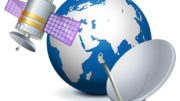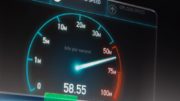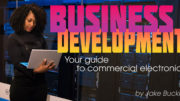All in all, the cellular network in the US is pretty strong. Major carriers like to say that 99% of the populated areas of the country have cell signal from at least one of AT&T, Verizon, or T-Mobile. And, that’s probably true. But that doesn’t take into account two things. The first, as people who read this blog a lot know, is that energy-efficient building materials can block 80% or more of the cell signal that’s outside. The other is that there are still pockets here and there that have poor signal or no signal at all.
For folks with decent signal outside and practically no signal inside, there’s a great solution: a cell phone signal booster. This system takes signals from outside, massively amplifies them, and blankets your entire space with great cell service. But what if signal is weak or non-existent outside? What can you do?
First things first
A cell phone signal booster is a pretty neat invention, but it’s not actual magic. It can’t create a cell signal where there isn’t one. Often times you can get enough signal to boost if you use a sensitive antenna and a tall tower. If that still isn’t enough, no cell phone booster is going to work for you. Your best option at that point is to use Wi-Fi Calling if your area has internet. Wi-Fi Calling has its own limitations, but it’s a good second choice if you can’t get cell signal at all.
Boosting signal to an outdoor space
Here’s a scenario to consider. Imagine if you’re in a small valley with no cell service at all. You’re surrounded by tall hills and there’s just no way for signal to get through. What if you ran an antenna from the top of the hill, all the way to the center of the valley? Could you create a cell phone signal booster system that worked both inside and outside to give the area the cell service you want?
The “generally accepted” answer is no, you can’t do that. While you can locate an antenna up to 10 kilometers from your cell booster, you will need a fiber interconnect to do it and they’re pricey. If you were to choose to do that, you could absolutely get good cell signal indoors by using a cell phone signal booster. At Signal Connect, we’ve done several systems like this and they work great.
The way you should be doing something like this involves working with the carriers themselves. If you find the right people at the cell phone companies, you can have repeaters and microcells added to your area. Your Signal Connect reps can help you with this as well. We have contacts at all the major carriers and we offer a lot of the equipment needed for this sort of thing.
The outdoors issue
The “indoor” or server antenna part of a cell phone signal booster system must be used indoors. As part of your agreement to use a broadcast device like a cell phone signal booster, you agree to use it the way the manufacturer tells you to use it. Without exception, every cell booster manufacturer will tell you that the indoor antenna is for indoors, period.
If you have both the indoor and outdoor antennas outside where they can receive each other’s signals, there’s practically no limit to the bad things that can happen. In a best case scenario, anti-feedback circuitry built into every cell booster will just cut the power to both antennas. At that point they’re useless. If for some reason that doesn’t happen, it could be a part of a feedback loop that fries the local cell tower and goes on to wreak havoc on the whole system. That’s really rare and there are safeguards against it, but it could happen.
But what if it didn’t? I’m going to present a hypothetical here. Don’t try this at home, as they say, but it’s an interesting “what if” kind of thing.
Imagine no cell service. None.
Let’s go back to that little valley surrounded by hills that block 100% of cell signals. In that scenario, you put an antenna a mile away on the top of a hill. You send the signal down via fiber to a series of powerful amplifiers. In a case like that, there would be no chance of feedback. No matter how powerful you make the signal coming out of the “indoor” antennas, it’s never going to reach the “outdoor” antenna. It’s never going to reach the cell carriers, except through the “outdoor” antenna.”
In a case like that, it’s almost like the entire area of the valley is “indoors,” surrounded by the hills which block signals. In theory, a series of antennas could be used to provide cell service that way. Traditional omnidirectional outdoor antennas could be used. Remember that all cellular antennas are two-way. The big technical difference between “outdoor” and “indoor” is in the way the coverage from that antenna is mapped out.
But remember, it’s just a thought experiment
I know that none of us ever read terms and conditions. We don’t do it, and it’s something that’s always bugged me. Still, I have to point out again that the terms and conditions of using your cell phone signal booster say you’ll use it the way you should and you won’t modify it. Maybe at some point in the future there will be a legal carveout for things like hidden valleys, but that’s not where we are today.
If you have a specific need and you’re not sure if a cell phone signal booster can fill it, why not find out more? The experts at Signal Connect have decades of experience helping people and companies improve their cell coverage. Our team can recommend just the right solution whether you need to cover 10 square feet or 100,000. Our team will give you all the options. If you need installation, we’ll help find someone in your area. We can even plan a complex system to give you cell signal in the most odd layouts.
Give the folks at Signal Connect a call! We’re here for you during East Coast business hours. Call 888-233-7563. If it’s after hours, fill out the form below, and we’ll get right back to you!





